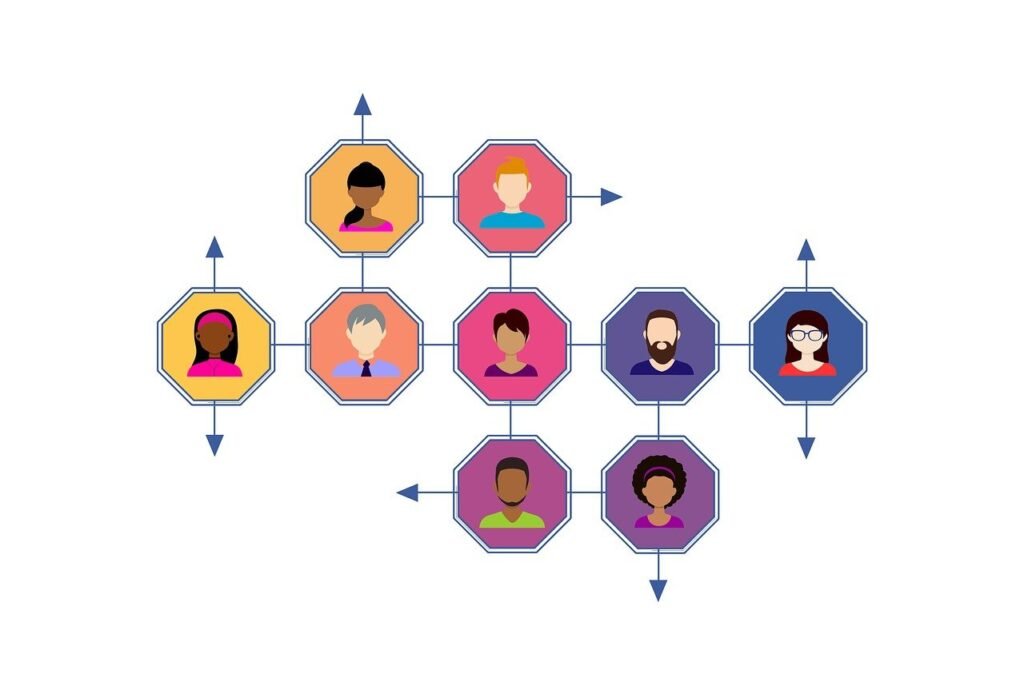This Article has been revised, edited and added to, by Poulomi Chakraborty.
- The Power of Content in Promoting Sustainability
- The Influence of Storytelling
- Understanding the Strategic Role of Content
- Crafting Compelling Narratives
- Leveraging Data for Persuasion
- Interactive Content to Boost Engagement
- Video Content as a Driver of Emotional Engagement
- Optimizing Content for Search and Social Media
- Continuously Evolving Content Strategy
- Blog Post Ideas to Advocate Sustainability
- The Origin Story of Your Sustainability Startup
- Decoding Sustainability Myths
- Spotlight on Sustainable Innovations
- Interviews with Sustainability Thought Leaders
- DIY Tips for Sustainable Living
- Case Studies on Sustainable Impact
- Showcasing Sustainability Through Customer Success Stories
- Exploring the Science Behind Sustainability
- Leveraging Local and Global Sustainability Efforts
- Addressing Industry-Specific Sustainability Challenges
- Encouraging Sustainable Practices in the Workplace
- Hosting Virtual Events on Sustainability Topics
- Utilizing Visual Content to Enhance Engagement
- Infographics: Simplifying Complex Data
- Videos: Bringing Sustainability to Life
- Creating a Visual Identity for Your Sustainability Message
- Integrating Visual Storytelling in Your Content Strategy
- Enhancing User Interaction through Augmented Reality
- Utilizing User-Generated Content to Foster Community
- Employing Visuals to Simplify Complex Data
- The Role of User Engagement in Promoting Sustainability
- Encouraging User-Generated Content
- Comments, Queries, and Conversations
- Cultivating a Dialogue-Driven Community
- Personalizing User Experiences to Increase Interaction
- Leveraging Gamification to Encourage Sustainable Actions
- Facilitating Peer-to-Peer Learning and Support
- Integrating Real-Time Feedback Mechanisms
- Collaborations: Joining Forces with Other Sustainability Champions
- Addressing Controversies and Criticisms
- Advocating Policy Changes and Grassroots Movements
- Highlighting Global Initiatives
- Advocacy and Petitions
- Mobilizing Support for Policy Advocacy
- Creating Collaborative Platforms for Grassroots Initiatives
- Leveraging Storytelling to Highlight Grassroots Impact
- Facilitating Educational Outreach to Empower Advocacy
- Demonstrating the Business Case for Policy Change
- Final Words: The Ripple Effect of Sustainability Content
In today’s era, where consumers are more conscientious than ever about their environmental footprint, sustainability startups have a unique platform from which to make a significant impact. Blogging is a potent tool to educate, inspire, and engage with a target audience. This article delves into blog post ideas that can not only drive awareness about sustainability but also amplify the reach of your sustainability startup.
The Power of Content in Promoting Sustainability

Before we explore individual blog post ideas, it’s essential to understand the significance of content in advocating sustainability.
The Influence of Storytelling
Humans are wired to connect with stories. Narratives about sustainability can evoke emotions, drive action, and foster a deeper understanding of complex issues.
Storytelling Benefits:
- Humanizes Complex Topics: Sustainability can often encompass technical or complex subjects. Storytelling can simplify and make these topics relatable.
- Builds Trust: Sharing behind-the-scenes insights or challenges faced by your startup can establish trust with your audience.
- Drives Engagement: Personal or impactful stories are more likely to be shared, amplifying your startup’s reach.
Understanding the Strategic Role of Content
Content is not just about sharing information; it’s about shaping perceptions, educating the market, and positioning your sustainability startup as a thought leader. The strategic use of content can turn your startup’s values and missions into narratives that not only inform but also inspire action and change.
Effective content strategies go beyond blog posts to include multimedia approaches that cater to various learning styles and engagement preferences. Through a careful blend of storytelling, data visualization, and interactive media, startups can create a comprehensive content ecosystem that supports their sustainability goals.
Crafting Compelling Narratives
The heart of powerful content lies in its ability to tell stories that resonate. For a sustainability startup, this means crafting narratives that are not only true to your mission but also deeply engaging for your audience. These stories should connect on a personal level, showing the human impact of sustainability and the tangible benefits of embracing eco-friendly practices.
For example, instead of merely stating that your products reduce waste, share a narrative about how this commitment to waste reduction has transformed a community or positively impacted individual customers.
Leveraging Data for Persuasion
In the sustainability sector, data is a potent tool for persuasion. It’s one thing to claim that your startup is making a difference; it’s another to show it. Develop content that showcases empirical evidence of your impact, such as carbon footprint reductions, waste management statistics, or water conservation results.
However, data alone can be dry or overwhelming. The key is to translate these numbers into engaging visual content like interactive graphs, heat maps, or before-and-after scenarios that make the data relatable and easy to understand.
Interactive Content to Boost Engagement
Engagement is crucial for turning passive readers into active participants. Interactive content not only draws readers in but also gives them a hands-on understanding of sustainability practices.
Consider developing interactive quizzes that help users assess their environmental footprint, or create simulation tools that allow them to see the potential impact of adopting different sustainability practices. These tools not only educate but also provide personalized insights, making the abstract concept of sustainability tangible and actionable.
Video Content as a Driver of Emotional Engagement
Videos remain one of the most effective mediums for engaging content, capable of conveying complex information in an emotionally compelling and accessible format. For a sustainability startup, video content can range from behind-the-scenes tours of eco-friendly manufacturing processes to customer testimonials and impactful mini-documentaries on environmental issues.
These videos can serve as powerful tools for storytelling, providing a visual and emotional connection to the issues your startup addresses.
Optimizing Content for Search and Social Media
While creating outstanding content is critical, ensuring it reaches your target audience is equally important. Search engine optimization (SEO) and social media strategies must be integral parts of your content plan. Optimize your content with relevant keywords related to sustainability to enhance its visibility on search engines.
On social media, tailor your content to fit the platform—whether it’s short, impactful posts for Twitter, image-driven stories for Instagram, or detailed articles on LinkedIn. Each piece of content should be designed to engage, inform, and encourage sharing, increasing the visibility and impact of your startup’s mission.
Continuously Evolving Content Strategy
The digital landscape and environmental issues are both rapidly changing, and your content strategy should evolve accordingly. Regularly review analytics to gauge what types of content perform best and adapt your strategy to more of what works and less of what doesn’t.
Additionally, stay informed about the latest developments in sustainability and digital marketing to ensure your content remains relevant and impactful.
By enhancing the power of content, sustainability startups can not only educate their audience but also inspire them to make meaningful changes, driving both business growth and environmental impact. This strategic approach to content is crucial for any startup looking to make a difference in today’s eco-conscious market.
Blog Post Ideas to Advocate Sustainability

With the foundational understanding of content’s impact, let’s delve into specific blog post ideas tailored for sustainability startups.
The Origin Story of Your Sustainability Startup
Every startup has a unique journey. Sharing the inspiration and challenges behind your sustainability venture can resonate deeply with your audience.
Key Points to Cover:
- Eureka Moment: Describe the moment or the series of events that led to the creation of your startup.
- Challenges Overcome: Highlight some obstacles faced and how they were tackled, emphasizing the commitment to sustainability.
- Vision for the Future: Share your startup’s future aspirations, painting a picture of the sustainable impact you aim to achieve.
Decoding Sustainability Myths
Misconceptions about sustainability abound. By addressing and debunking these myths, you can educate your audience and highlight the authenticity of your startup’s mission.
Myths to Address:
- “Sustainable Products are Always More Expensive”
- “One Person’s Efforts Can’t Make a Difference”
- “Sustainable Choices are Inconvenient or Less Effective”
For each myth, provide facts, statistics, and examples to offer a clear, evidence-backed explanation.
Spotlight on Sustainable Innovations
Showcase innovative products, processes, or technologies in the sustainability realm. While you can highlight your startup’s offerings, also consider spotlighting other groundbreaking innovations in the industry.
Spotlight Ideas:
- Eco-friendly Packaging Solutions
- Breakthroughs in Renewable Energy
- Innovative Water Conservation Techniques
Interviews with Sustainability Thought Leaders
Engaging with experts in the sustainability field can offer fresh perspectives to your audience and establish your startup’s commitment to genuine sustainable practices.
Interview Format Ideas:
- Q&A Sessions: A structured question and answer format that delves deep into specific sustainability topics.
- Podcast Style: An informal conversation, potentially covering a wider range of topics and personal insights.
- Panel Discussions: Engage multiple experts to discuss and debate a pressing sustainability issue.
DIY Tips for Sustainable Living
People often want to make sustainable choices but might not know where to start. Offering simple, actionable DIY tips can be both engaging and impactful.
DIY Topic Ideas:
- Home Gardening Techniques
- Crafting Eco-friendly Household Cleaners
- Upcycling Projects for Waste Reduction
For each tip, provide a step-by-step guide, complete with images or videos, making it easy for readers to follow along.
Case Studies on Sustainable Impact
Real-life examples showcasing the positive impact of sustainable choices can be compelling and motivate readers to take action.
Case Study Structure:
- Background: Introduce the situation or challenge faced.
- Action: Detail the sustainable solution or strategy implemented.
- Results: Share quantifiable outcomes, such as reduced waste, energy saved, or communities positively impacted.
Showcasing Sustainability Through Customer Success Stories
One effective strategy for promoting sustainability is to share detailed customer success stories. These narratives can focus on how your products or services have enabled customers to achieve their sustainability goals.
For instance, a blog post could tell the story of a small business that significantly reduced its environmental impact by using your sustainable products. Such posts not only demonstrate the real-world impact of your solutions but also help potential customers visualize their own success with your offerings.
Exploring the Science Behind Sustainability
Deep diving into the science and technology that power sustainability can be extremely compelling. A series of posts could demystify the technology behind renewable energy sources, like solar panels or wind turbines, used by your startup.
Alternatively, exploring the lifecycle of sustainable materials used in your products can provide transparency and educate your audience on the importance of sustainable practices throughout the supply chain. This kind of content positions your startup as a knowledgeable leader in sustainability while fostering trust through transparency.
Leveraging Local and Global Sustainability Efforts
Another strategic content area involves connecting your efforts with wider sustainability initiatives both locally and globally. Creating posts that detail how your startup’s efforts align with global sustainability goals, such as those outlined in the United Nations Sustainable Development Goals, can elevate your brand’s standing in the industry.
On a local level, you might discuss partnerships with community organizations to address local environmental issues, thereby demonstrating community engagement and responsibility.
Addressing Industry-Specific Sustainability Challenges
Writing about the specific sustainability challenges and solutions within your industry can also be highly strategic. This could involve a series of in-depth analyses on how different sectors are approaching sustainability and what innovations seem most promising.
Highlighting the unique challenges and advancements in industries like manufacturing, agriculture, or technology provides valuable insights to your readers and underscores your startup’s expertise and commitment to innovation in sustainability.
Encouraging Sustainable Practices in the Workplace
Encouraging sustainability within the workplace is another crucial area where your blog can have a significant impact. Write about practical ways businesses can implement sustainable practices in their daily operations.
This could range from reducing waste, optimizing energy use, or encouraging green commuting options among employees. Sharing detailed guides on how to transition to a green office can serve as a blueprint for other companies, reinforcing your role as a sustainability advocate.
Hosting Virtual Events on Sustainability Topics
In the digital age, interactive content like virtual events has become increasingly important. Hosting webinars, live Q&As, and virtual panels discussing pressing sustainability issues can not only enhance engagement but also broaden your startup’s reach.
Covering these events in your blog posts not only promotes them but also extends their life by transforming live discussions into on-demand content that continues to engage and inform visitors long after the events have concluded.
By expanding your blog content to include these areas, you can significantly amplify your startup’s voice in the sustainability conversation, attract a broader audience, and ultimately drive more engagement towards sustainable practices.
Each of these strategies offers a unique angle to not only inform and educate but also inspire action among your readership, thereby enhancing your startup’s impact in the sustainability sector.
Utilizing Visual Content to Enhance Engagement
The adage “A picture is worth a thousand words” holds true, especially when discussing sustainability topics that might sometimes feel abstract or overwhelming.
Infographics: Simplifying Complex Data
Infographics can present data in an engaging and easily digestible manner, making them perfect for sustainability topics.
Infographic Ideas:
- The Lifecycle of Recycled Products
- Comparative Carbon Footprints of Different Activities
- Water Consumption Patterns Worldwide
Videos: Bringing Sustainability to Life
Videos can make sustainability concepts tangible and relatable, offering a dynamic way to engage with your audience.
Video Content Ideas:
- Behind-the-scenes Tours: Showcase the sustainable processes or technologies used in your startup.
- Customer Testimonials: Share stories of customers who’ve benefitted from your sustainable products or services.
- Documentary Style: Explore a specific sustainability issue in depth, combining expert interviews, real-life examples, and solutions.
Creating a Visual Identity for Your Sustainability Message
Developing a strong visual identity that resonates with your brand’s sustainability ethos is crucial in standing out in a crowded marketplace. This involves consistent use of design elements that reflect your sustainable practices and values across all your content.
For instance, choosing color palettes that are inspired by nature, or design motifs that symbolize growth and renewal, can reinforce your message subliminally. Tailoring your visual content to reflect not only your brand’s identity but also its commitment to sustainability can create a lasting impression on your audience.
Integrating Visual Storytelling in Your Content Strategy
Visual storytelling can transform statistical data and complex information into compelling narratives. This strategy involves more than just creating attractive graphics; it’s about telling a story that aligns with your brand’s mission.
For example, a video documentary that follows the lifecycle of a recycled product from inception to market can illustrate the impact of sustainable practices in a way that statistics alone cannot.
These stories not only hold the viewer’s attention but also help them understand the practical implications of sustainability, making the abstract more tangible.
Enhancing User Interaction through Augmented Reality
Augmented reality (AR) offers innovative ways to engage your audience by bringing digital elements into the real world. AR can be used to show potential changes in the environment due to climate change or to demonstrate how using certain sustainable products can alter an environment.
For instance, an AR app that visualizes the benefits of solar energy in a user’s home can significantly enhance user engagement and comprehension. Incorporating AR into your visual content strategy not only sets your brand apart but also offers a dynamic and interactive experience to your audience.
Utilizing User-Generated Content to Foster Community
Encouraging your audience to share their own visuals can be a powerful way to build community and authenticity around your sustainability initiatives. This could involve inviting customers to post pictures of themselves using your sustainable products or participating in community cleanup events.
Showcasing these user-generated visuals not only provides social proof of your products’ impact but also enhances customer engagement by directly involving them in your sustainability narrative. This strategy not only amplifies your reach through social sharing but also strengthens your relationship with your community.
Employing Visuals to Simplify Complex Data
The use of infographics and data visualization can play a pivotal role in demystifying and disseminating complex sustainability data. Creating visually appealing, easy-to-understand infographics that summarize research findings, environmental impact statistics, or sustainability progress reports can help your audience quickly grasp key points.
This method of simplifying detailed reports into digestible visuals ensures that your audience can easily comprehend and remember the information, increasing the likelihood of sharing and further engagement.
By enhancing your content with these visual strategies, you not only enrich the user experience but also significantly boost the effectiveness of your message. Visuals are not just embellishments but essential tools that can convey your sustainability message more powerfully and memorably than words alone.
Incorporating these visual content strategies will help you connect more deeply with your audience, fostering both understanding and action towards sustainability.
The Role of User Engagement in Promoting Sustainability

Beyond just presenting content, fostering an interactive community can amplify the impact of your sustainability messages.
Encouraging User-Generated Content
Engage your audience by encouraging them to share their own sustainability stories, tips, or experiences.
Engagement Tactics:
- Contests: Organize sustainability-themed contests where users can share photos, videos, or stories, potentially winning eco-friendly prizes.
- Feature Segments: Dedicate a section of your blog to feature user-generated content, offering a platform for community members to shine.
Comments, Queries, and Conversations
Fostering discussions around your blog posts can offer deeper insights and build a sense of community.
Conversation Starters:
- End with Questions: Conclude blog posts with open-ended questions, prompting readers to share their thoughts or experiences.
- Moderated Discussions: Occasionally host live discussion sessions, focusing on pressing sustainability topics, where users can interact in real-time.
Cultivating a Dialogue-Driven Community
Engaging users is not just about receiving feedback; it’s about fostering a community that participates in an ongoing dialogue about sustainability. By transforming your platform into a space where users feel comfortable sharing their thoughts and experiences, you create an environment of learning and inspiration.
For example, hosting regular live Q&A sessions with experts in the field of sustainability not only answers questions but also deepens the community’s knowledge and commitment to sustainable practices. This engagement helps to cultivate a community that is invested in the ideals of sustainability your startup promotes.
Personalizing User Experiences to Increase Interaction
Personalization can significantly enhance user engagement by making interactions feel more relevant and meaningful to individual users. Employing machine learning algorithms to tailor content recommendations based on past interactions can make users feel uniquely understood and valued.
For instance, if a user consistently reads blog posts about sustainable agriculture, your platform can automatically suggest new or related content in this niche. Personalized experiences keep users coming back, reinforcing their commitment to sustainability through repeated engagement with content that resonates deeply with their interests and values.
Leveraging Gamification to Encourage Sustainable Actions
Gamification is a powerful tool for boosting user engagement by incorporating game-like elements into non-game contexts, such as competition, points, and rewards. Implementing a rewards system for users who engage in sustainable practices, like a points system for reducing personal carbon footprints or participating in community sustainability events, can significantly increase user interaction.
This approach not only makes the process of engaging with sustainability more fun and rewarding but also encourages continuous participation and advocacy among your user base.
Facilitating Peer-to-Peer Learning and Support
Creating platforms for peer-to-peer exchange can amplify the impact of your sustainability efforts by leveraging the collective knowledge and enthusiasm of your community. Setting up forums or groups where users can share their experiences, advice, and success stories with each other can foster a supportive environment.
This peer-to-peer interaction often leads to more engaged users, as they feel part of a likeminded community working towards a common goal. It also helps spread innovative ideas and practical sustainability tips more rapidly through your user base.
Integrating Real-Time Feedback Mechanisms
Real-time feedback is crucial for adapting and improving your content and strategies based on user responses. Integrating features that allow users to immediately react to blog posts, videos, and other content types—such as “like” buttons, comment sections, and share features—can provide instant feedback.
This not only informs you of what content resonates but also encourages a dynamic interaction between your startup and its audience. Responsive engagement tools help maintain a lively and interactive platform, essential for building a dedicated and active community.
By enhancing the role of user engagement in your sustainability initiatives, you not only boost the reach and effectiveness of your message but also foster a strong, active community that is essential for long-term impact.
These strategies help transform passive readers into active participants, who not only contribute to but also amplify your sustainability efforts.

Related: Check out our free SEO suite

Collaborations: Joining Forces with Other Sustainability Champions
In the realm of sustainability, collaboration often amplifies impact. Partnering with other eco-conscious entities can expand reach and create synergies in messaging.
Collaborative Blog Series
Engage with other sustainability startups or eco-friendly influencers to create a series of collaborative blog posts.
Collaboration Ideas:
- Shared Sustainability Challenges: Each entity writes about a specific sustainability challenge they’ve faced and how they’ve tackled it.
- Guest Posts: Allow guest bloggers from other sustainability-focused entities to share insights, studies, or experiences on your platform.
Reviews and Recommendations
Authentically promote other sustainable products, services, or initiatives, and consider inviting others to review or discuss your startup’s offerings.
Review Concepts:
- Product Swaps: Exchange products with another sustainability startup and offer genuine reviews for each other’s items.
- Curated Lists: Create a curated list of top sustainable products, apps, or services, potentially inviting representatives from each to contribute insights or details.
Establishing Strategic Alliances for Greater Impact
Creating strategic alliances with other organizations that share your commitment to sustainability can lead to more comprehensive and impactful outcomes. This involves identifying potential partners who bring complementary skills, resources, or audiences to your initiatives.
For instance, partnering with a company specializing in renewable energy can enhance your sustainability credentials and provide your startup with the expertise needed to implement more sustainable energy solutions within your operations.
Such collaborations not only broaden the scope of your efforts but also enhance credibility and resource sharing among partners.
Co-Creating Content to Diversify Perspectives
Engaging in content co-creation is a powerful way to leverage the strengths and insights of different sustainability champions. By collaborating on blog posts, research papers, or multimedia content, you can combine diverse expertise and perspectives, offering your audience a richer and more comprehensive view of sustainability issues.
This approach can take the form of joint studies on environmental impact, co-authored blog series that tackle complex sustainability challenges, or collaborative webinars that bring together experts from different fields.
Co-created content not only enriches your content stream but also draws in the audiences from each collaborator, significantly expanding reach.
Leveraging Cross-Promotion to Expand Reach
Cross-promotion with other sustainability-focused entities can be a mutually beneficial way to grow your audience and strengthen your brand’s presence. This could involve sharing each other’s content, promoting each other’s products or services, or even featuring each other in newsletters and on social media platforms.
The key to successful cross-promotion is to maintain a balance where all parties benefit equally, ensuring that each brand’s integrity and value proposition are respected and highlighted. This strategy helps to tap into an already engaged audience that is pre-disposed to be interested in sustainability.
Developing Joint Initiatives to Solve Complex Problems
Working together on joint initiatives can address environmental issues that are too complex for any one entity to tackle alone. These initiatives might include community clean-up drives, tree planting missions, or even developing new sustainable technologies.
The collaborative effort not only pools resources but also combines different areas of expertise, creating more effective solutions to sustainability challenges. Furthermore, these initiatives provide substantive content for storytelling, showcasing real-world applications of your combined efforts and the tangible impact of your collaboration.
Organizing Joint Events for Community Engagement
Organizing events like conferences, workshops, or panel discussions with other sustainability leaders can significantly boost engagement and education among your communities. These events serve as platforms for discussing current issues, sharing innovations, and networking with like-minded individuals and organizations.
They also provide content opportunities for live streaming, post-event recordings, and other multimedia content that can engage audiences who are unable to attend in person. Hosting such events strengthens the sense of community and shared purpose among participants, which is essential for fostering a collaborative spirit within the sustainability ecosystem.
By embracing these collaborative strategies, your startup can amplify its sustainability efforts and create a larger impact than working in isolation. These partnerships not only enhance the resources available for sustainability initiatives but also foster a community of practice that supports continuous learning and improvement.
This network of collaborators becomes a formidable force in driving forward the sustainability agenda, making each contribution more significant and effective.
Addressing Controversies and Criticisms

The road to sustainability is filled with challenges, and criticisms or controversies may arise. Addressing these head-on through your blog can establish transparency and trust.
Debunking Misconceptions
If there are common misconceptions or myths associated with your products, services, or the broader sustainability niche you occupy, address them clearly.
Myth-busting Posts:
- Fact vs. Fiction: Create a segment that regularly clarifies facts and dispels fiction related to sustainability.
- Scientific Backing: When debunking misconceptions, provide scientific studies, expert quotes, or verifiable data to reinforce credibility.
Addressing Negative Feedback
If your startup faces criticism or negative feedback, consider writing a detailed response, outlining steps taken to address concerns.
Response Strategies:
- Open Dialogue: Invite constructive feedback and show genuine commitment to continuous improvement.
- Action Plans: If valid concerns are raised, detail the actions your startup plans to take to address them.
Embracing Transparency in Communication
When facing controversies or criticisms, it is vital for sustainability startups to embrace transparency as a core part of their communication strategy. This means openly discussing challenges and issues that arise, rather than avoiding them.
Establishing a transparent communication channel where stakeholders can view the steps your startup is taking to address specific issues can build trust and credibility. For example, if your startup is criticized for its supply chain practices, you might publish a detailed blog post explaining your current practices, the challenges you face, and the steps you are taking to improve these practices.
Implementing Proactive Public Relations
Proactive public relations involve anticipating potential controversies and preparing responses ahead of time. This could mean conducting regular audits of your company’s operations in anticipation of areas where you might receive criticism, such as environmental impact assessments or third-party reviews of your sustainability claims.
By having a ready set of data and responses, your startup can manage controversies more effectively. This proactive approach not only minimizes damage but also demonstrates your commitment to integrity and responsibility.
Engaging Directly with Critics
Direct engagement with critics can be a constructive strategy for handling controversies. This involves monitoring social media and other forums for negative feedback and addressing it head-on.
Organizing a live session to discuss the concerns raised by critics can be an effective way to show that your startup is serious about listening to feedback and willing to make changes. This direct dialogue can turn critics into collaborators by involving them in the process of finding solutions.
Educating Your Audience Through Controversies
Every controversy presents an opportunity to educate your audience about the complexities of sustainability. When criticisms arise, creating content that explains the broader context of the issue can help your audience understand the challenges your startup faces.
For instance, if there are misconceptions about the effectiveness of renewable energy sources, a detailed blog post that explains the science behind these technologies and the steps being taken to improve them can help clarify these issues for your readers.
Building a Resilient Brand Image
To effectively address controversies and criticisms, it is important to build a brand image that is resilient. This involves not only responding to immediate issues but also consistently communicating your brand’s values and the positive impact of your work.
Highlighting your successes in an honest and humble way can help balance negative press. Additionally, maintaining a steady flow of positive news about your company’s efforts and achievements in sustainability can reinforce a positive image and help mitigate the impact of any negative stories.
By adopting these strategies, your sustainability startup can effectively manage and respond to controversies and criticisms. This not only protects your brand’s reputation but also strengthens your relationships with customers and other stakeholders by demonstrating your commitment to transparency, engagement, and continuous improvement.
Advocating Policy Changes and Grassroots Movements

Use your platform to support larger sustainability movements or advocate for policy changes that can drive systemic impact.
Highlighting Global Initiatives
Shed light on global sustainability initiatives, detailing their significance and how individuals can contribute or support.
Global Focus Topics:
- Climate Change Conventions
- Ocean Cleanup Initiatives
- Deforestation Prevention Pacts
Advocacy and Petitions
If there’s a local, national, or global policy that can significantly impact sustainability, use your blog to advocate for it.
Advocacy Strategies:
- Educational Posts: Break down the policy or movement, explaining its significance and potential impact.
- Call to Action: Encourage readers to sign petitions, attend rallies, or engage in other advocacy efforts.
Mobilizing Support for Policy Advocacy
For sustainability startups, advocating for policy changes can be a significant lever for broader environmental impact. It involves not just lobbying for changes but mobilizing your audience to support these efforts.
To effectively engage in policy advocacy, your startup could develop a series of in-depth blog posts that outline key policies affecting sustainability and explain how these policies impact the environment and society.
These posts can serve as a call to action, encouraging readers to participate in campaigns aimed at influencing policy decisions. The strategy here is to provide your audience with the knowledge and tools they need to become effective advocates themselves.
Creating Collaborative Platforms for Grassroots Initiatives
Grassroots movements thrive on collaboration and community support. By creating a platform where like-minded individuals and organizations can converge, your startup can amplify the impact of grassroots efforts.
This could involve setting up an online forum or a social media group dedicated to specific sustainability issues. Through these platforms, participants can share ideas, coordinate activities, and garner support for various initiatives.
The goal is to create a vibrant community that can push for change at the local, national, and even international levels.
Leveraging Storytelling to Highlight Grassroots Impact
Storytelling is a powerful tool in the arsenal of any organization aiming to inspire action and support for grassroots movements. By sharing stories of how individual actions have led to significant environmental impact, your blog can highlight the effectiveness of grassroots initiatives.
These stories can be about community-led clean-up drives, successful recycling programs, or local conservation efforts. The key is to show the tangible results of these grassroots movements, thereby encouraging more readers to get involved.
Facilitating Educational Outreach to Empower Advocacy
Education is fundamental to effective advocacy. Your startup can play a critical role by providing educational content that empowers your audience to engage in informed advocacy.
This could include detailed explanations of the scientific principles behind sustainability, the economics of environmental policies, or the social benefits of adopting green practices.
Additionally, hosting webinars or podcasts featuring experts in policy, science, and activism can provide your audience with the insights and confidence needed to advocate for meaningful change.
Demonstrating the Business Case for Policy Change
As a sustainability startup, illustrating the economic benefits of policy changes can make a compelling case to a variety of stakeholders, including businesses, policymakers, and the public.
Blog posts that analyze and present data on the economic impact of sustainable policies—such as job creation in the renewable energy sector or cost savings from waste reduction programs—can help shift the narrative from sustainability as a cost to sustainability as an investment.
This strategic approach not only aids in advocating for policy changes but also aligns with the interests of the business community, potentially broadening the support base for these initiatives.
By enhancing your content strategy to include advocacy for policy changes and support for grassroots movements, your sustainability startup can extend its influence beyond direct business activities into broader societal impact.
This strategic approach not only furthers the mission of promoting sustainability but also positions your startup as a leader in the movement for environmental change.
Final Words: The Ripple Effect of Sustainability Content
The impact of well-crafted sustainability content extends far beyond the confines of your blog or social media platforms. Each piece of content you create not only informs and educates but also inspires and motivates action. By consistently sharing stories, data, and insights that highlight the importance and feasibility of sustainable practices, your startup plays a crucial role in shaping public perception and behavior towards environmental stewardship.
The ripple effect of your content can be seen in the growing awareness of sustainability issues, increased engagement from your community, and the broader adoption of eco-friendly practices by individuals and other businesses. As your content reaches more people, it catalyzes a chain reaction where informed individuals become advocates for change in their own circles, multiplying the impact exponentially.
Remember, the journey towards sustainability is a continuous one, and your content is a vital tool in this journey. It serves as a beacon of knowledge and a call to action that drives collective progress towards a more sustainable and equitable world. By remaining committed to delivering high-quality, impactful content, your startup not only leads by example but also contributes to a larger global movement towards sustainability.
Read Next:
- Understanding and Overcoming Your Competitors SEO Strategies
- How to Perform an SEO Competitive Analysis in Travel
- How to Beat Big Brands in SEO as a Small Travel Agency
- Recover from a Google Algorithm Penalty: For Travel Websites
- Importance of Reviews and Ratings in Green E-Commerce SEO






















Comments are closed.